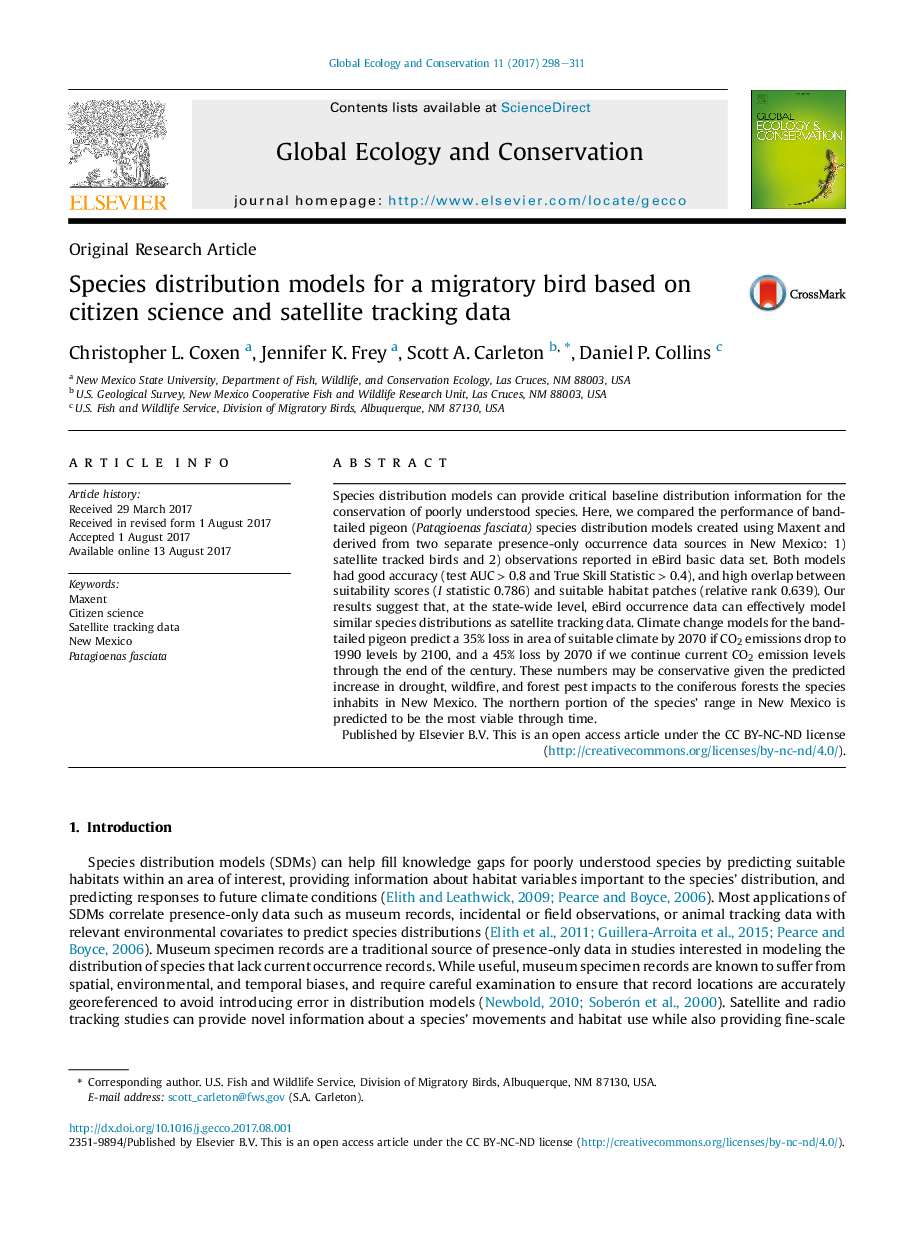| کد مقاله | کد نشریه | سال انتشار | مقاله انگلیسی | نسخه تمام متن |
|---|---|---|---|---|
| 5742418 | 1617656 | 2017 | 14 صفحه PDF | دانلود رایگان |
- eBird data and satellite tracking data can model similar species distributions.
- eBird based models offer accurate and cheap data source for conservation planning.
- Future climate change predictions result in a net loss of suitable climate.
- Results add further support for citizen science sourced occurrence data.
Species distribution models can provide critical baseline distribution information for the conservation of poorly understood species. Here, we compared the performance of band-tailed pigeon (Patagioenas fasciata) species distribution models created using Maxent and derived from two separate presence-only occurrence data sources in New Mexico: 1) satellite tracked birds and 2) observations reported in eBird basic data set. Both models had good accuracy (test AUC > 0.8 and True Skill Statistic > 0.4), and high overlap between suitability scores (I statistic 0.786) and suitable habitat patches (relative rank 0.639). Our results suggest that, at the state-wide level, eBird occurrence data can effectively model similar species distributions as satellite tracking data. Climate change models for the band-tailed pigeon predict a 35% loss in area of suitable climate by 2070 if CO2 emissions drop to 1990 levels by 2100, and a 45% loss by 2070 if we continue current CO2 emission levels through the end of the century. These numbers may be conservative given the predicted increase in drought, wildfire, and forest pest impacts to the coniferous forests the species inhabits in New Mexico. The northern portion of the species' range in New Mexico is predicted to be the most viable through time.
Journal: Global Ecology and Conservation - Volume 11, July 2017, Pages 298-311
